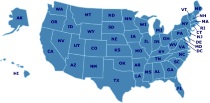Science
Find out where to get science materials and lab equipment, how to teach physics, chemistry, and biology, how to find great science field trips in Ohio, and more.
Homeschool Science Resources
We cover all the basics of teaching and learning science in your homeschool. Get tips and ideas for incorporating science education into your everyday life, along with information on materials and curriculum suppliers.
Elementary
Young children learn science best by living and exploring the world around them. Come and get some great resources, tips, and ideas for teaching elementary-aged children science and discovery.
Nature Studies
The study of nature is appealing to people of all ages. It is easy to incorporate nature studies into your homeschooling approach. Some homeschooling methods focus very strongly on nature studies, including the Charlotte Mason method. Learn why it is so important and some great approaches to learning from nature.
Biology & Life Sciences
Learn about the human body, plant life, and the animal world. Come see the resources and ideas we've collected to make learning about biology interesting, easy, and fun. From preschool-aged to high school level, you'll find everything you need here.
Ecology/Conservation
Protecting the Earth for future generations takes first learning about our planet, the environment, and how the ecosystem works. Get ecology teaching tips, project ideas, and more.
Paleontology
Learning about dinosaurs is always fun. Find the best resources on the Internet for studying paleontology and dinosaurs.
Chemistry
From equipment to textbooks, websites to periodic tables, you'll find everything you need to successfully teach chemistry in your homeschool.
Activities & Experiments
ExploraVision
ExploraVision is a competition for all students in grades K-12 attending a school in the U.S., Canada, U.S. Territory or a Department of Defense school. Homeschooled students are eligible to enter. It is designed to encourage students to combine their imagination with their knowledge of science and technology to explore visions of the future. Teams of students select a technology, research how it works and why it was invented, and then project how that technology may change in the future. They must then identify what breakthroughs are required for their vision to become a reality and describe the positive and negative consequences of their technology on society. Winning ideas have focused on things as simple as ballpoint pens and as complex as satellite communications. The student teams write a paper and draw a series of Web page graphics to describe their idea. Regional winners make a Web site and a prototype of their future vision.
Teaching Tips & Ideas
How I Teach a Large Family in a Relaxed, Classical Way: Science
Family style learning is a great way to tackle lots of different subjects, including science.
Kapili.com
Kapili.com offers over three hundred science tutorials and over three hundred activities, broken into general, life, earth, space, and physical science sections. Members can print the tutorials for use offline or in classrooms. Their library continues to grow with a glossary of over 4,500 entries and a species database with over 1,000 animals and plants.
Articles
The Trouble With Textbooks
The science books used in the classroom today provide a lot of facts, but they don't help children grasp the most basic concepts about the world we live in.
Khan Academy
Khan Academy is a completely free educational resource site. Students can make use of their extensive library of content, including interactive challenges, assessments, and videos from any computer.
Featured Resources
As an Amazon Associate, we earn from qualifying purchases. We get commissions for purchases made through links on this site.
Right-Brained Children in a Left-Brained World: Unlocking the Potential of Your ADD Child
Understanding your child's learning style can help with challenges in learning, improving outcomes in reading, writing, and behavior. This book offers strategies for understanding your child's learning style and presents tools that you can use to become more successful in your homeschooling.
Homeschoolers' Success Stories : 15 Adults and 12 Young People Share the Impact That Homeschooling Has Made on Their Lives
Despite their growing numbers, many homeschoolers still find their experience somewhat isolating. This collection of short biographies aims to alleviate some of that loneliness. While the stories profile modern-day homeschool grads and students, famous homeschooled personalities from the past are offered up early in the book for historical inspiration. John Adams, Abraham Lincoln, steel magnate Andrew Carnegie, newspaper publisher Joseph Pulitzer, photographer Ansel Adams, poet Robert Frost, and...
Greenleaf Press
Greenleaf Press is a small family-owned and operated publisher and supplier of quality books for children. They are committed to "twaddle-free", living books, and approach teaching history to children using biography and chronology. You will find sections in the catalog covering each major historical period in order, with a variety of biographies, reference books, and historical fiction. For Israel, Egypt, Greece, Rome, the Middle Ages, and the Renaissance and Reformation there are Greenleaf Stu...
Kids' Poems (Grades 1)
Regie Routman shares her delightful selection of free verse poems written by first graders that will inspire your second graders to think, I can write poems like this too! Regie provides strategies for using kids' poems as models to guide children to write poems about things they know and care about: learning to skate, disliking asparagus, playing with a best friend, and more. She describes the way she invites children to study the model poem, beginning by asking kids, What do you notice? She sh...
Serving Homeschooled Teens and Their Parents (Libraries Unlimited Professional Guides for Young Adult Librarians Series)
This guide for librarians addresses the needs of homeschooled teens and how a library can meet those needs. Includes ideas like developing a homeschool resource and book collection to creating special homeschool programs. While this book was written for library staff, it is also an insightful guide into how homeschoolers and libraries can work together.




